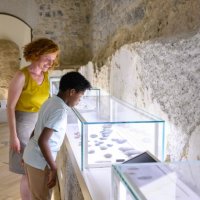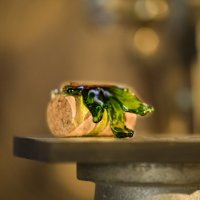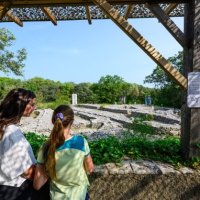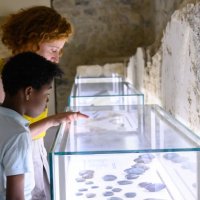Saint-André-de-Buèges
- Historical heritage
- Prehistoric heritage
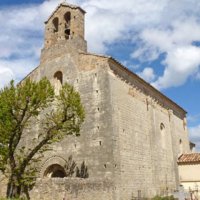
Dominated by the Roc Blanc, summit of the Séranne mountain (942 m), the village of Saint-André-de-Buèges in the valley is watered by the Buèges river, making it the starting point for a pleasant family hike in this part of the Mediterranean Languedoc.
During the evangelisation of the countryside in the middle of the Middle Ages, the monks of the nearby abbeys of Gellone (Saint-Guilhem-le-Désert) and Aniane, began by founding churches. They were often built in places that had previously been the object of pagan worship.
In Saint-André-de-Buèges, the church was built next to a spring, in the centre of a territory in which farms were established. Only a school was added at the very end of the 19th century. Classified as a historical monument, the religious building has preserved its original lines (end of the 11th century), a witness to the Lombard architecture so popular in our cantons.
The village, although far from the main trade routes, was nevertheless on a communication route that was once important, of which the Vareilhes bridge over the Buèges (15th century) is a vestige.
What is the "Buèges"?
Boia, Bodia, such were the first names of the Buèges valley in the 11th century. The word, derived from the Gallic balga, refers to a deep and humid ground, probably as the valley appeared to its inhabitants at the time. During the 18th century, it was preceded by the article "la" taken in isolation and in a restrictive way, to designate the river.
Mairie de Saint-André-de-Buèges
Le Village
04 67 73 71 22
Mail
Heritage and culture in Saint-André-de-Buèges
- Menhirs, dolmens, caves
- Romanesque church (XIᵉ century)
- Draille, mule track
- Medieval bridges (Vareilhes)
- Old mines
- Glassmaking tradition
- The commune is classified Terrasses du Larzac (vins AOP)
Les partenaires de l'Office de Tourisme
du Grand Pic Saint-Loup à Saint-André-de-Buèges :

